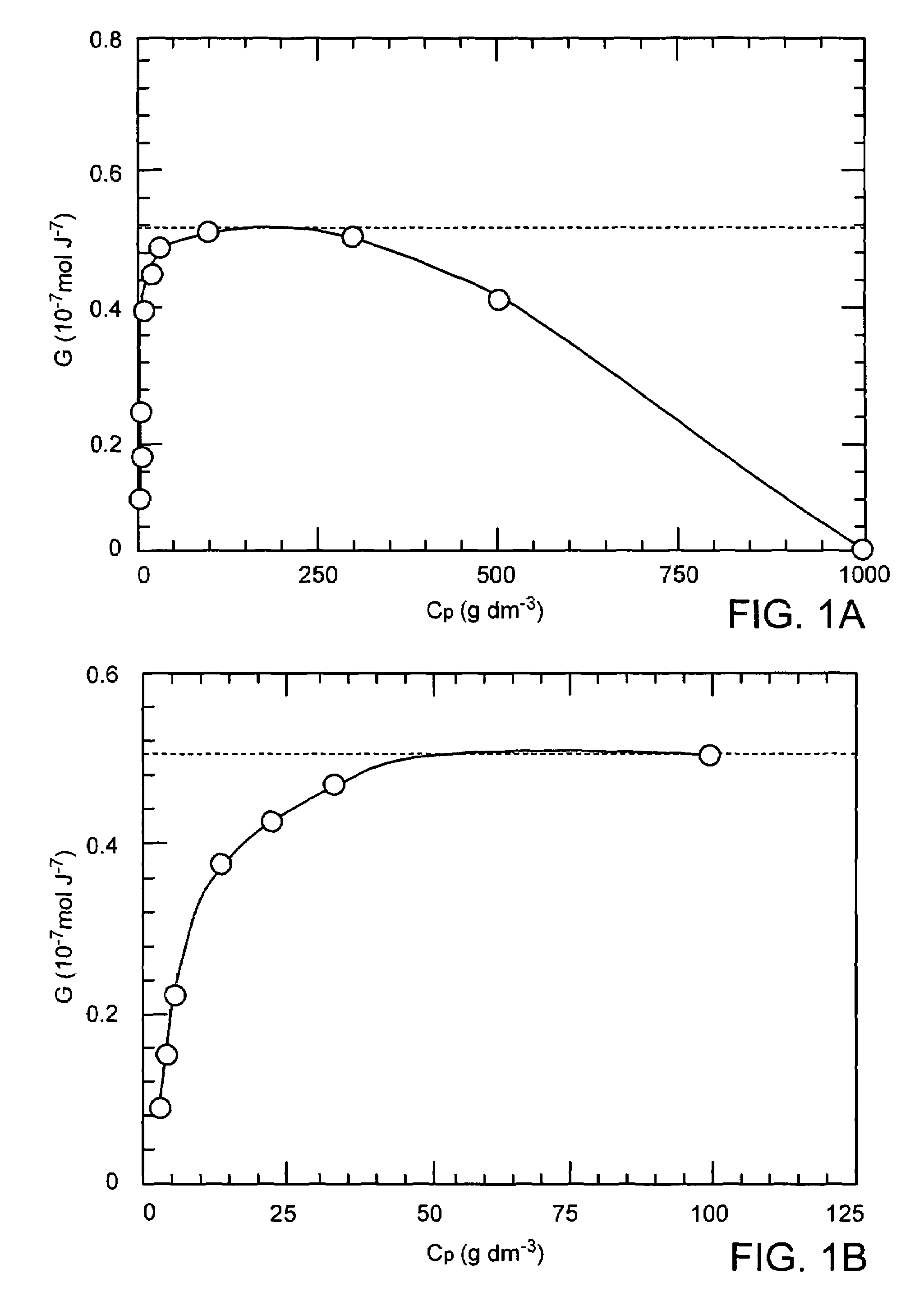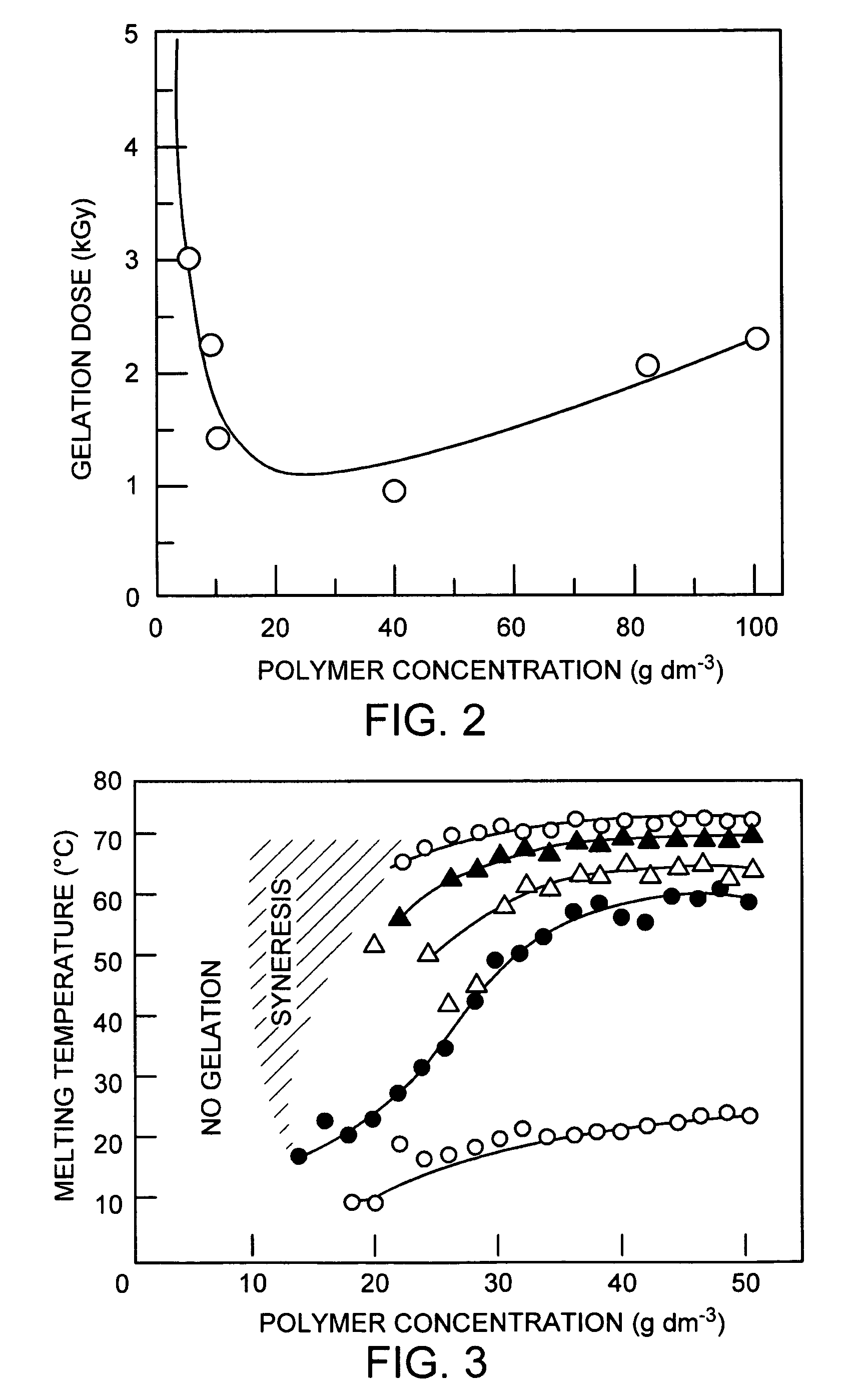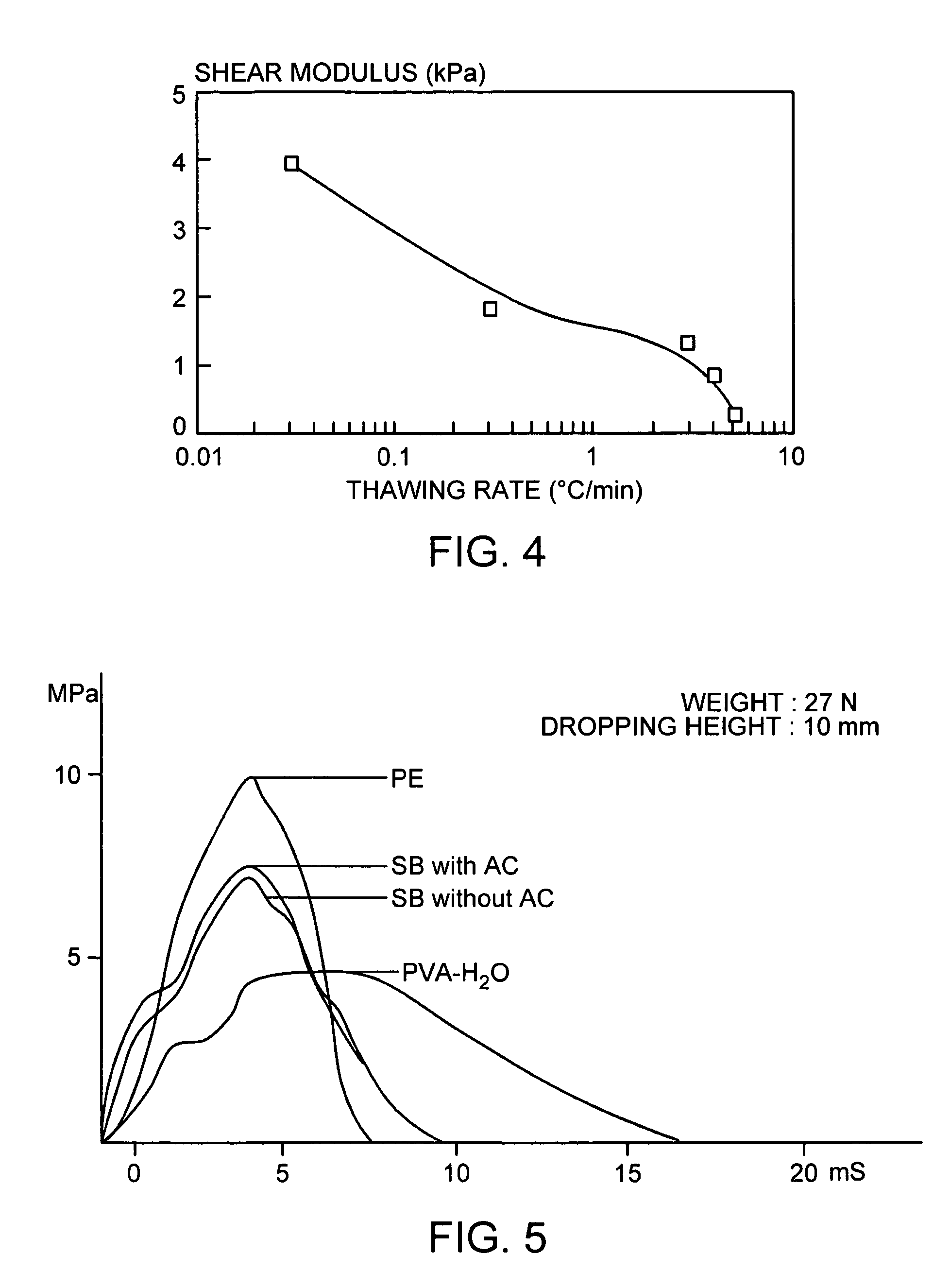PVA hydrogel
a hydrogel and polymer technology, applied in the field of pva hydrogel, can solve the problems of low modulus, difficult irradiation of hydrophilic polymers in dry form, and general non-use of pva as a load-bearing biomaterial, and achieve the effects of less leachable polymers, reduced thawing rate, and reduced leaching ra
- Summary
- Abstract
- Description
- Claims
- Application Information
AI Technical Summary
Benefits of technology
Problems solved by technology
Method used
Image
Examples
example 1
[0078]Cylindrical covalently cross-linked vinyl polymer hydrogels were irradiated using a uniform irradiation distribution. Solutions of poly(vinyl alcohol) (105 g / mole; 93%+hydrolyzed) were prepared in water to concentrations of 10%. The solutions were cast in thin sheets (4 mm) and subjected to one freeze-thaw cycle by immersion in an NaCl / ice bath at −21° C. for 8 hours and then allowing them to thaw at room temperature. Disks were cut from the sheets to form cylindrical disks. The samples were then irradiated in a hydrated state to 100 kGy by electron beam. Some of the resultant gels were then raised to 80° C. to melt-out the freeze-thaw generated crystals. Swelling ratios of the gels were recorded to discern the effects of the processing on the cross-link density.
[0079]FIGS. 9 and 10 show cylindrical PVA disks, generated by one freeze thaw of 10% PVA solution, prior to and following irradiation. FIG. 9 shows an array 100 of four cylindrical PVA hydrogels 110, 120, 130 and 140 c...
example 2
[0084]This example demonstrates that irradiation of freeze-thawed gels held in a particular shape induces “memory” of that shape. Solutions of poly(vinyl alcohol) (105 g / mole; 93%+hydrolyzed) were prepared in water to concentrations of 10 wt. %. The solutions were poured into flexible tubing with interior diameters of 0.25″. The ends of each piece of tubing were sealed, the tubes were coiled into a spiral, and the spirals were subjected to one freeze-thaw cycle by immersing in a NaCl / ice bath at −21° C. for 8 hours and then allowing them to thaw at room temperature for four hours. The samples were then irradiated in a hydrated state to a radiation dose of 100 kGy using an electron beam. Some of the resultant coiled gels were then raised to 80° C. to melt the physical associations produced by the freeze-thaw treatment.
[0085]FIG. 11 shows a coil300 formed of a PVA hydrogel 310 comprising 10% PVA showing retention of the coiled form after the melting-out of physical associations. Solut...
example 3
[0086]The following examples demonstrate that both gradient and discrete shielding of the electron beam can be used to manipulate the final properties of the PVA covalently cross-linked vinyl polymer hydrogels. FIG. 12 shows three sets of PVA disks with various types of shielding to induce spatial gradients in covalent crosslinking. FIG. 12 shows an array 400 of packaged PVA disks about to undergo electron beam irradiation where disks 410, 420 received no shielding, disks 430, 440 received gradient shielding and disks 450, 460 received stepped shielding. FIG. 13A shows a continuous gradient PVA hydrogel 510 formed by a single freeze-thaw cycle and then irradiated in a hydrated state to 100 kGy with an electron beam prior to melt-out. The arrow 520 points in the direction of increasing covalent crosslinks (higher received dose). FIG. 13B shows the same continuous gradient PVA hydrogel 510 shown in FIG. 13A following melt-out having the arrow 520 pointing in the direction of increasin...
PUM
| Property | Measurement | Unit |
|---|---|---|
| diameter | aaaaa | aaaaa |
| concentration | aaaaa | aaaaa |
| concentration | aaaaa | aaaaa |
Abstract
Description
Claims
Application Information
 Login to View More
Login to View More - R&D
- Intellectual Property
- Life Sciences
- Materials
- Tech Scout
- Unparalleled Data Quality
- Higher Quality Content
- 60% Fewer Hallucinations
Browse by: Latest US Patents, China's latest patents, Technical Efficacy Thesaurus, Application Domain, Technology Topic, Popular Technical Reports.
© 2025 PatSnap. All rights reserved.Legal|Privacy policy|Modern Slavery Act Transparency Statement|Sitemap|About US| Contact US: help@patsnap.com



